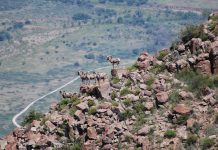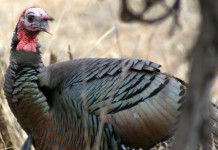A juvenile whooping crane was accidentally shot and killed in January near St. Joseph’s Island in Aransas County, Texas Parks and Wildlife Department law enforcement officials said.
A fresh water duck hunter out on his first coastal duck hunt Jan. 12 saw a bird he believed was a sandhill crane and shot it, according to a news release. When the man retrieved the bird he discovered it was a young endangered whooping crane and turned himself in to a state game warden stationed in Aransas County.
The game warden contacted a U.S. Fish and Wildlife Service agent, who joined the warden in investigating the case. Charges are pending in U.S. District Court, according to the release.
Since beginning their slow recovery from a low of 16 birds in the 1940s, whoopers have, with few exceptions, always wintered on the Texas coast on and near Aransas National Wildlife Refuge. However, in the winter of 2011-12, several groups of whooping cranes expanded their wintering areas to include more coastal areas and even inland Texas sites.
Whoopers usually follow a migratory path through North and Central Texas that includes cities such as Wichita Falls, Fort Worth, Waco, Austin, and Victoria. During migration they often pause overnight to use wetlands for roosting and agricultural fields for feeding, but seldom remain more than one night. They nearly always migrate in small groups of less than six t0 eight birds, but they may be seen roosting and feeding with large flocks of the smaller sandhill crane. They are the tallest birds in North America, standing nearly five feet tall. They are solid white in color except for black wing-tips that are visible only in flight. They fly with necks and legs outstretched.
The whooping crane population that winters in Texas is the only self-sustaining wild population of whooping cranes in the world. The U.S. Fish and Wildlife Service is analyzing survey data to produce an estimate for the Texas flock this year; biologists anticipate that number will be about 300 birds, according to the release.
This case is only the fifth known shooting death of a whooping crane since 1968, although one additional death in Calhoun County in early 2012 is under investigation. The juvenile whooper shot in January is believed to have been one of 34 juveniles that began the migration from Canada last fall—a relatively low production year for whooping cranes in contrast to recent years, according to the release.
Residents can help by reporting sightings of whooping cranes and by preventing disturbance of cranes when they remain overnight at roosting and feeding locations. Sightings can be reported to whoopingcranes@tpwd.state.tx.us or 512-389-8999. Observers are asked especially to note whether the cranes have colored leg bands on their legs. Volunteers interested in attending training sessions to become “Whooper Watchers” in order to collect more detailed data may also contact the TPWD at whoopingcranes@tpwd.state.tx.us or 512-389-8999.
Texas Whooper Watch (www.tpwd.state.tx.us/whoopingcranes) is a volunteer monitoring program that is a part of TPWD’s Texas Nature Trackers program. The program was developed to keep track of an ever-expanding population of whooping cranes by improving the accuracy of surveys on the wintering grounds since growth of the flock has made traditional census methods more difficult.
Additional information, including photos of whooping crane look-alike species, can be found at www.tpwd.state.tx.us/whoopingcranes and at www.whoopingcrane.com/report-a-sighting.






















